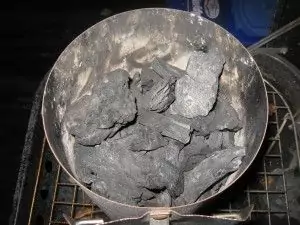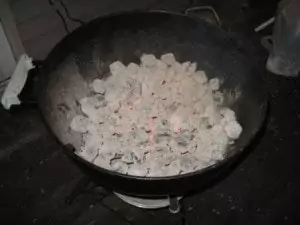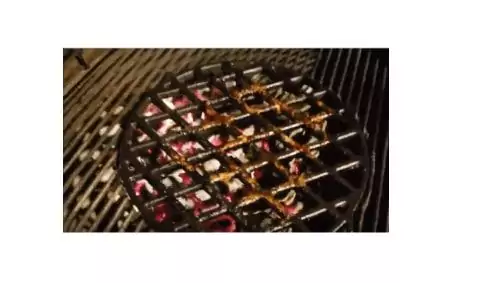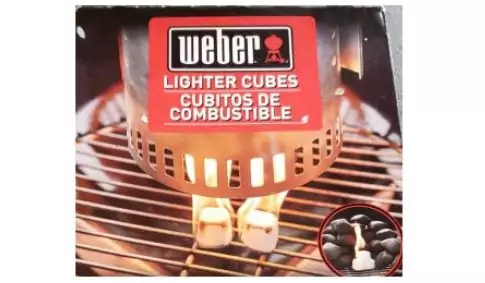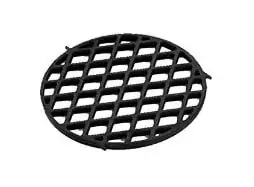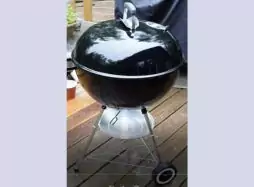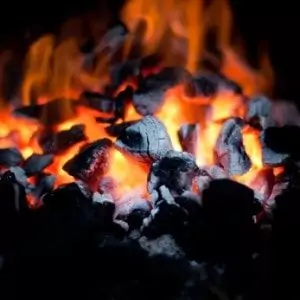 Barbecue and grilling require some distinct type of heat source to yield their delicious and delectable results. The various options for heat sources are numerous as are the types of smokers, grills, and accessories you can purchase in the marketplace.
Barbecue and grilling require some distinct type of heat source to yield their delicious and delectable results. The various options for heat sources are numerous as are the types of smokers, grills, and accessories you can purchase in the marketplace.
Sticking with only one type of fuel source for your grilling and barbecue won’t allow you to experience the many different ways to cook your favorite meats, vegetables, and seafood. Exploring the different types of fuel sources will open up your mind to the possibilities that grilling and barbecue can offer as well as the various flavors and aromas that they can impart.
Lump Charcoal
Lump charcoal is a fuel type that is not regularly used by the casual griller. Lump charcoal is created by placing wood logs in dug-out trenches and covering them with sheet metal and dirt. The pile of logs is lit at one of the ends and the wood cooks and smolders for a number of days to complete the process.
Due to the fact that the fire has a limited supply of oxygen since it is underground, any water or sap within the wood fuels the fire and is completely burned off. In the end what is left is basically pure carbon or lump charcoal. Lump charcoal gets up to temperature much faster than regular charcoal and can result in almost an roaring, explosive fire due to any gasses that could be trapped within the charcoal. Lump charcoal is made from various hardwoods such as maple and hickory which leads to wonderful smoky aromas from a lump charcoal fire.
Kingsford Briquettes
The most popular type of charcoal briquette is made by Kingsford. In 2006, Kingsford made some changes to their charcoal briquettes. The most obvious difference in Kingsford charcoal briquettes is the addition of what Kingsford calls “Sure Fire Grooves” which are seen as 1/8” grooves on each briquette.
These grooves were added to increase air flow between each briquette yielding a much faster lighting time. Kingsford also claims that their new briquette burns longer than the design before 2006. The most abundant ingredient in the Kingsford briquette is wood char which is the result of wood products burned down into charcoal. The percentage of wood char in the briquettes increased with the newer version.
One of the benefits of increased wood char is that the briquettes produce less ash and have a much longer burn time. Kingsford, on their company website, has this to say about their latest formula: “we’ve made a significant investment in formula enhancements and high quality ingredients that contribute to longer burn time.” The exact ingredients and their percentages have not been fully disclosed by Kingsford or I would supply them here.
And don’t forget that you can reuse charcoal briquettes if you shut the vents right after cooking. This will save you money in the long run!
Propane
Chances are, if you are a homeowner you own the king of the grills – the propane grill. Propane has become the fuel type of choice for the weekend griller. In the parking lot at a football game during pre-game festivities you will see hundreds of propane grills lined up for the all-important tailgating. The popularity of this type of grill is unmatched. Propane is easy to buy at any local hardware store or big box store and tends to last for a long time depending upon your frequency of grilling. To avoid running out, all you have to do is pick up a backup tank. The instantaneous flame with the push of a button on most models saves time over using charcoal or wood. Propane, as a fuel source, clearly rules the grilling kingdom.
Electricity
Electricity may not be the most often-used fuel type for grilling or barbecue but it is certainly convenient. Indoor electric grills are especially attractive as the homeowner does not have to deal with potentially harsh outdoor elements. These indoor grills are also perfect for the condo owner where the association does not allow cooking on the decks. There is also the convenience of not having to buy, charcoal, propane, or different woods to fuel the fire. Just plug your grill in and you’re cookin! Not only can you find many different electric grills available for purchase but you can also find electric smokers if barbeque is your preference. Take a quick tour online by searching on electric grills and you see a plethora of grills and smokers using electricity as the heat source.
Wood
Unless you are grilling over a camp fire, chances are you don’t grill over a wood fire although it certainly is one of the options for fueling your fire. There have even been grates fashioned to fit inside an indoor fireplace allowing a homeowner to cook a steak or a pork chop over a roaring fire. In lieu of cooking over a wood fire, wood chips such as hickory, mesquite, apple, pecan, oak, and others are soaked and used to add a smokey flavor to your grilled meats, seafood, and vegetables.
Fuel types for barbecue and grilling are varied. Whatever works for you is the best option as long as the results of your efforts are delectable and mouth-watering.
Bob started this passion site, Life with Grilling, in 2012. Life with Grilling has been a trusted source for grilling and barbecue tips, techniques, and accessories for over 10 years. Bob has been charcoal grilling for most of his adult life and smoking meats using a personally-configured stick-burner Brinkmann smoker since 2012.
His passion for charcoal grilling was instilled into him by his father who used charcoal on a basic grill to cook for his family on warm summer nights. Charcoal grilling and tending to his smoker has been a happy pastime of Bob’s, especially as he enters his retirement years. His love of all things grilling and smoking has allowed him to review the best charcoal grills and grilling accessories available in the martketplace and to develop many recipes, grilling tips, and techniques over the years. He is eager to share his lifelong grilling experiences and expertise through Life with Grilling!

